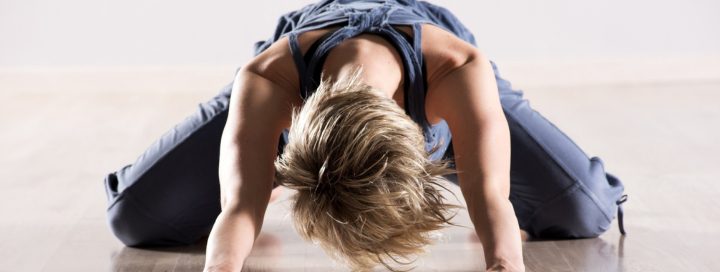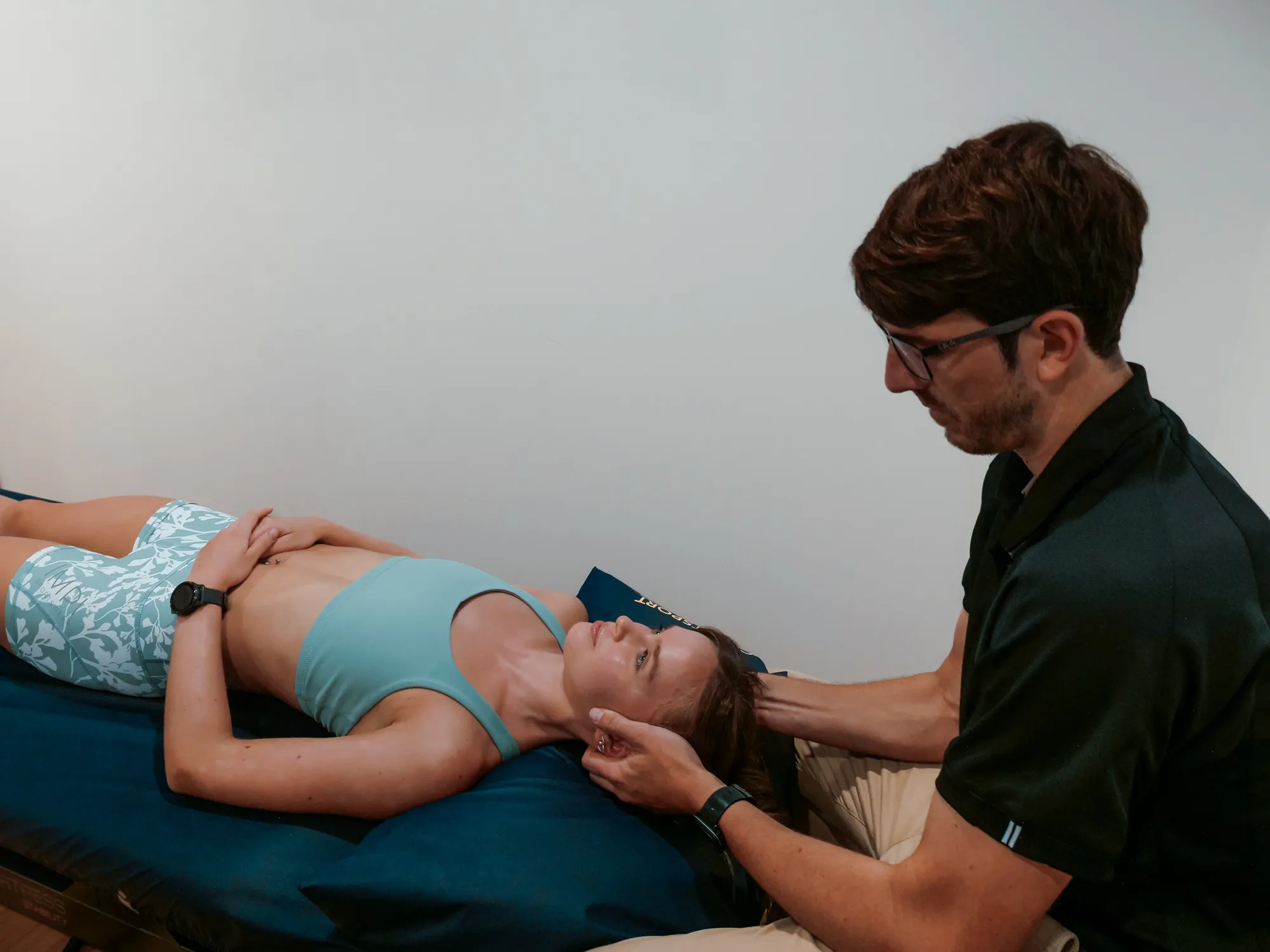Have you ever felt tightness in the front of your hip? Perhaps you’ve experienced stiffness in your lower back or pain while running? If so, you might need to release some tension by stretching your hip flexors.
Understanding how to effectively release and stretch these muscles can significantly improve your overall mobility and reduce discomfort. In this guide, we will delve into what hip flexors are, why they become tight, and how this tightness can impact your body.
We will also cover how often you should stretch your hip flexors and provide detailed instructions on three effective stretches to release them — each designed to help stretch and release tight, painful, and uncomfortable flexors.


What are Hip Flexors and Why Do They Get Tight?
Hip flexors are a group of muscles located at the front of your hip, crucial for movements such as bringing your knees towards your chest and stabilising your spine. The key muscles in this group include the iliopsoas, iliacus, rectus femoris, and sartorius. These muscles are heavily engaged in activities like walking, running, and kicking. Understanding why these muscles get tight is essential for addressing the issue effectively.
Reasons for Tight Hip Flexors:
- Prolonged Sitting: Sitting for long periods, whether at a desk, during a commute, or at home, keeps these muscles in a shortened position.
- Overuse: Activities that excessively engage the hip flexors, like cycling or running, can lead to tightness.
- Weak Glutes: Weakness in the opposing muscle group (glutes) can cause the hip flexors to compensate and become tight.
- Poor Posture: Consistently standing or sitting with poor posture can contribute to hip flexor tightness.
When hip flexors become tight, they can cause the pelvis to tilt forward (anterior pelvic tilt), leading to an increased arch in the lower back (lordosis). This posture might not inherently be bad, but if it’s causing discomfort, it needs addressing. Understanding these underlying causes helps in adopting the right measures to alleviate and prevent tightness.
The Impact of Tight Hip Flexors on Your Body
Tight hip flexors can significantly affect your body’s function and comfort. When these muscles are tight, they create imbalances that can lead to discomfort and pain. Understanding the impact of tight hip flexors is essential for addressing and mitigating these issues effectively. Here are a few ways they impact you:
Lower Back Pain
Tight hip flexors pull the pelvis forward, increasing the curve in your lower back. This can lead to lower back pain and stiffness. The strain on your lumbar spine from this altered posture can cause discomfort and long-term issues if not addressed promptly. This pain can become chronic, affecting your daily activities and overall quality of life.
Reduced Mobility
When your hip flexors are tight, your range of motion decreases. This limitation can affect everyday activities like bending, walking, or even standing up straight. Reduced mobility can lead to a sedentary lifestyle, which further exacerbates muscle tightness and weakness. Over time, this can result in a cycle of reduced movement and increased discomfort, making it harder to maintain an active and healthy lifestyle.
Postural Issues
Consistently tight hip flexors can cause imbalances in your posture, leading to compensations in other parts of your body. This imbalance can create a chain reaction of discomfort and potential injury. For instance, tight hip flexors can cause your pelvis to tilt forward, which in turn can lead to a misalignment in your spine and affect your overall posture.
Athletic Performance
For athletes, tight hip flexors can hinder performance by restricting the efficient movement of the hips, which are central to most physical activities. This restriction can limit speed, agility, and overall athletic ability. Addressing hip flexor tightness through proper stretching can enhance performance and reduce the risk of injury.
How Often Should You Stretch Your Hip Flexors?

To maintain flexibility and prevent tightness, it’s essential to incorporate regular stretching into your routine. Stretching helps to lengthen the muscles, improve blood flow, and maintain a healthy range of motion. Here are some guidelines on how often you should stretch your hip flexors:
Daily Stretching
Ideally, stretching should be done daily, especially if you have a sedentary lifestyle or engage in activities that strain the hip flexors. A few minutes each day can make a significant difference in maintaining flexibility and preventing tightness. Incorporating hip flexor stretches into your daily routine can help to counteract the effects of prolonged sitting and other activities that contribute to tightness.
Throughout the Day
In addition to a dedicated stretching routine, it’s beneficial to incorporate stretches throughout the day. Taking short breaks to stretch your hip flexors can help to relieve tension and prevent tightness from building up. This is especially important if you spend long hours sitting at a desk or in a car. Aim to take a few minutes every hour to stand up, move around, and stretch your hip flexors.
Before and After Exercise
Stretching your hip flexors before and after exercise can help to prepare your muscles for activity and aid in recovery. Pre-exercise stretching can improve flexibility and reduce the risk of injury, while post-exercise stretching can help to release tension and promote muscle recovery. Make hip flexor stretches a part of your warm-up and cool-down routine to keep your muscles healthy and flexible.
3 Easy Stretches to Release Your Hip Flexors
Stretching your hip flexors regularly can help to release tension and improve flexibility. Here are three easy stretches to get you started:
Kneeling Hip Flexor Stretch
The kneeling hip flexor stretch is a simple yet effective way to release tension in the hip flexors. This stretch helps to lengthen the muscles and improve flexibility.
Why It’s Good and What It Helps With
This stretch targets the hip flexors and helps to lengthen them, reducing tightness and improving flexibility. It also helps to alleviate lower back pain by reducing the forward tilt of the pelvis. The kneeling hip flexor stretch is particularly beneficial for those who spend long hours sitting or have an active lifestyle that puts strain on the hip flexors.
How to Do It
- Start in a kneeling position on the floor with one knee on the ground and the other foot in front, forming a 90-degree angle.
- Slowly push your hips forward until you feel a stretch in the front of your hip and thigh of the leg that is kneeling.
- Hold the stretch for 20-30 seconds, keeping your back straight and avoiding any forward lean.
- Repeat on the other side.
For best results, perform the kneeling hip flexor stretch 2-3 times a day. This stretch is suitable for everyone, especially those who experience tight hip flexors due to prolonged sitting or physical activity. Regular practice can help to maintain flexibility and prevent discomfort.

Standing Hip Flexor Stretch
The standing hip flexor stretch is a convenient option for those who may not have the space or ability to kneel. This stretch can be done almost anywhere and helps to release tension in the hip flexors.
Why It’s Good and What It Helps With
This stretch is ideal for people who need a quick and effective way to stretch their hip flexors without getting down on the floor. It helps to lengthen the hip flexors, reduce tightness, and improve posture. The standing hip flexor stretch is particularly useful for those who need to stretch during breaks at work or while travelling.
How to Do It
- Stand with your feet hip-width apart and place one foot on a chair or step behind you.
- Keep your back straight and gently push your hips forward until you feel a stretch in the front of your hip and thigh of the leg that is behind.
- Hold the stretch for 20-30 seconds, ensuring that your lower back remains neutral and not overly arched.
- Repeat on the other side.
Perform the standing hip flexor stretch 2-3 times a day, especially during long periods of sitting or standing. This stretch is suitable for anyone looking for a quick and effective way to release hip flexor tension, particularly in environments where kneeling is not practical.
Powerband Overpressure Hip Flexor Stretch
The powerband overpressure hip flexor stretch is an advanced stretch that provides a deeper release for the hip flexors. This stretch uses a resistance band to increase the intensity of the stretch.
Why It’s Good and What It Helps With
This stretch is excellent for those who need a more intense stretch to release deeply seated tension in the hip flexors. The use of a resistance band helps to provide additional stretch and pressure, enhancing flexibility and muscle release. It’s particularly beneficial for athletes and those with significant hip flexor tightness.
How to Do It
- Secure a resistance band around a sturdy object and loop the other end around your back leg just below the glute.
- Start in a kneeling position with the resistance band providing tension on the back leg.
- Push your hips forward and hold the stretch for 20-30 seconds, feeling the added pull from the band.
- Repeat on the other side, gradually increasing the resistance as needed.
Perform this stretch once or twice a day, depending on your level of tightness and flexibility. This stretch is best suited for individuals who are already flexible and are looking for a more intense hip flexor release. It’s ideal for athletes and those with significant tightness that needs a deeper stretch.

Tips for Preventing Tight Hip Flexors
Preventing tight hip flexors is crucial for maintaining overall mobility and comfort. Here are some tips to keep your hip flexors flexible and healthy:
- Stay Active: Regular physical activity helps to keep your muscles flexible and reduces the risk of tightness. Incorporate a mix of aerobic exercises, strength training, and flexibility exercises into your routine.
- Take Breaks: If you spend long hours sitting, make sure to take regular breaks to stand up, move around, and stretch. Aim to move every 30 minutes to prevent muscle stiffness.
- Practise Good Posture: Maintaining good posture while sitting and standing can help to reduce the strain on your hip flexors. Ensure that your work setup is ergonomically friendly and that you are sitting or standing with a neutral spine.
- Stretch Regularly: Incorporate hip flexor stretches into your daily routine to maintain flexibility and prevent tightness. Regular stretching helps to lengthen the muscles and improve blood flow.
For professional advice and personalised stretching routines, contact Coast Sport today. Our team of experts can help you feel well, move well, and perform well. If you’re local to the Central Coast, NSW, Newcastle, or Greater Sydney area, let us assist you in maintaining your hip health and overall mobility.




 Helping the Central Coast Feel Well, Move Well and Perform Well!
Helping the Central Coast Feel Well, Move Well and Perform Well!